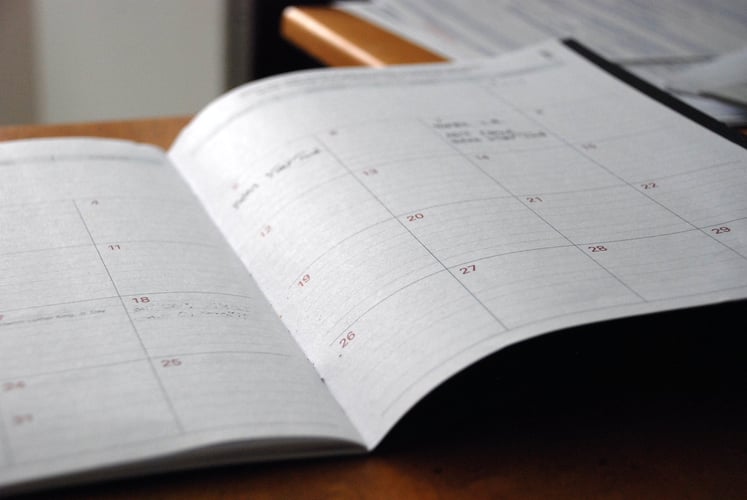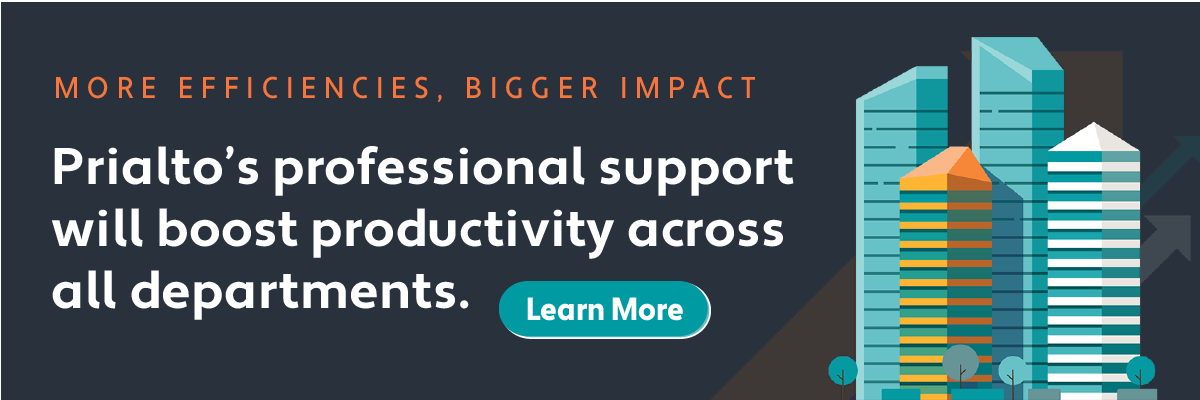Do you wait until April 14 to do your taxes? Do you wake up, check your email and suddenly realize you just wasted two hours? Do you stress out about deadlines?
These are all good reasons to make a daily schedule for your work and your personal life.
Having a daily schedule does not sound exciting. For many, the idea conjures the opposite reaction. Living by a set schedule? Boring. But it does not have to be that way. "Routines can be fun and don't need to be boring," said Northwestern Medicine. "Their health benefits will make you wonder why you didn't start one earlier." The health benefits of a daily schedule include:
-
Lower stress and anxiety
-
Improved mental health
-
More time to relax
-
Better sleep and higher energy levels
-
You'll keep your exercise commitments to be healthier
How to Make a Daily Schedule
A daily schedule and a routine are not the same things. Routines usually mean doing the same thing every day. A daily schedule may include routine tasks, but the daily schedule helps you proactively allocate time for specific tasks rather than opening your inbox in the morning and reacting to messages in chronological order without considering the importance and value of each one.
Write Down Your Daily Schedule
The best way to manage your time more effectively is to write down everything you need to do at the beginning or end of each day. The Ivy Lee Productivity Method recommends listing your tasks at the end of the day so you can start the next day with more focus.
Listing your tasks is even more critical when you are working from home. It is easy to get distracted by home tasks like meals, cleaning, and laundry. You can include home tasks in the list to ensure they get done, but the next step in the daily schedule makes all the difference.
Prioritize Your Daily Schedule
Listing your tasks is not enough. Prioritizing your tasks is critical because getting a lot of trivial work done at the expense of more important projects is unproductive. The Ivy Lee method suggests that you list the six most important tasks for the next day in order of importance and start with the most important one.
How do you decide what tasks are essential? A popular method is the Eisenhower Matrix, which differentiates between "urgent" and "important" tasks. The matrix stems from a famous quote by the late Army general and U.S. President Dwight D. Eisenhower: "What is important is seldom urgent, and what is urgent is seldom important."
In the Eisenhower Matrix, important tasks are those that you can do.
-
The highest priority tasks are those that are both urgent and important. Put those at the top of the list.
-
Jobs that are important but not urgent get scheduled for later.
-
Tasks that are urgent but not important get delegated to others.
-
Functions that are not urgent or important should not be done at all.
Calendar Your Daily Schedule
The next step in making your daily schedule is to calendar your time for each task. Putting everything on your calendar can seem tedious—do I really need to put "file expense report" or other functions that do not require a meeting on my calendar? Advocates for calendaring everything note the following benefits:
-
You switch from reacting to controlling your time
-
You are more likely to get everything done
-
You see where your time is going
-
You can see and enjoy your free time because you know you are on schedule
-
Others with access to your calendar cannot derail you
Another advantage of using your calendar to schedule everything in your day is that you can timebox. Timeboxing involves locking out time on your schedule for "deep work" that requires sustained focus. Timeboxing makes it far more likely that the work gets done and far less likely that you will be interrupted. Work you can timebox includes:
-
Planning
-
Research
-
Writing
-
Coding
To make timeboxing work, you need to remove tempting distractions and commit to the task at hand. To do this:
-
Close your door if you have one.
-
Use earplugs if you are in an open office
-
Turn off your phone
-
Turn off all alerts from email, chat, and social media
To timebox, you need to be able to estimate the time each task will need accurately. Once you get started, you will get more accurate as you do the work. Keep Parkinson's law in mind—work tends to expand to fill the time you give it!
Schedule the Tasks at the Right Time of Day
You need to know your productivity patterns. Are mornings the best time for deep work, or do you have more energy in the afternoon? Most people's Circadian Rhythm patterns reach a peak level of concentration at around 10:00 am. There are exceptions, of course. We all know some night owls get cranked up after dark and work into the wee hours. But for most people working the day shift, the typical rhythm is:
-
Increasing energy and focus from 9 am to noon
-
Initial fatigue and loss of concentration from 1 – 3 pm
-
A rise in energy from 3-6 pm
A way to use this rhythm with your schedule could be:
-
High-energy and high focus work until around noon
-
Reactive work like responding to emails from 1–3 pm
-
More focused work like meetings until the end of the day
Grouping tasks according to the time of day also reduces wasted "switching time." Researchers have found that it takes up to 25 minutes to change gears when moving from one type of work to another. You have to back out of an app or program and open another, and then reorient yourself to the interruption. Then you must return to where you left off with the previous project. Doing all of your email correspondence in chunks of time, for example, means you avoid interruptions by responding to messages as they arrive.
Rethink Meeting Times in Your Daily Schedule
It is time to rethink the one-hour meeting as the default meeting time. There is no reason an appointment cannot be 10, 15, 20, 30, or 45 minutes. Parkinson's law applies here, too—meetings also expand to fill the time you allocate to them.
Suppose you use a calendar app that allows others to book meetings with you. Set your default meeting time to 15 minutes. That sets expectations for the person requesting the meeting and forces efficiency. Your appointments will be shorter because the people booking them will figure out in advance how to communicate their information in 15 minutes.
Color Code and Categorize Your Daily Schedule
Scheduling everything, even free time, can make your calendar look chaotic and overwhelming. You can reduce the confusion by color-coding your schedule so that you can tell immediately whether a calendar item is a meeting or time you set aside for deep work. Categorizing your calendar invites in the subject line gives you the same information as alerts. When you see an alert cross your screen or in your inbox, you can see right away if it is a meeting or timeboxed for solo work. Alerts can be stressful. Categorizing invitations by color and the subject line reduces the stress of reminders and the time spent opening invitations to remember what they mean.
Categories can include:
-
Zoom meeting
-
Phone call
-
Writing
-
Brainstorming
-
CRM cleanup
-
Strategy
If you only see a day full of calendar items and can see what they are for, you will spend too much time opening and closing invitations.
Add Personal Items to Your Daily Schedule
You can also add any personal commitments to your daily calendar. Keeping two calendars will add to the risk of conflicts and missed meetings. Individual tasks like medical appointments, gym classes, hair care, and home repair services that need you to be in a specific place at a particular time can share your calendar with your work responsibilities.
Our personal and professional lives overlap more than ever. Keeping your work and personal calendars together keeps you from overcommitting.
Look Back on Your Daily Schedule
While making a schedule primarily focuses on the future, it can be a valuable tool for assessing your past accomplishments. The benefits of looking back on your calendar at the end of a week or month are:
-
You can list your accomplishments
-
You can see if you overscheduled
-
You can better allocate your time in the future
Reviewing your calendar can help you document your accomplishments for a performance review or when you want to make a case for more resources to delegate some of your responsibilities.
Take Back Your Daily Schedule
Making a daily schedule can help you get more done in less time. Seeing all your tasks in one place shows you that your day is manageable. You allocated the right amount of time for each task. It is a great feeling too. Knowing that you have done everything scheduled for the day, you can go home (or into the backyard) and relax. Just make sure your calendar for tomorrow is up to date.
About the Author: Bill is Prialto's senior content marketing manager and writes about the future of work and how businesses can be more productive and successful. His work has appeared in the World Economic Forum Agenda blog and CIO magazine.

